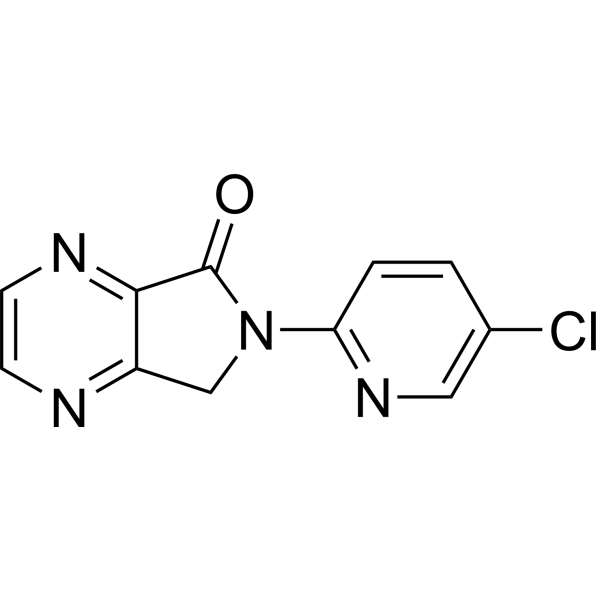
RP 48497
CAS No. 148891-53-6
RP 48497( —— )
Catalog No. M26580 CAS No. 148891-53-6
RP 48497 is a photodegradation product of Eszopiclone. Eszopiclone is used in the treatment of insomnia.
Purity : >98% (HPLC)
 COA
COA
 Datasheet
Datasheet
 HNMR
HNMR
 HPLC
HPLC
 MSDS
MSDS
 Handing Instructions
Handing Instructions
| Size | Price / USD | Stock | Quantity |
| 5MG | 307 | Get Quote |


|
| 10MG | 463 | Get Quote |


|
| 25MG | 838 | Get Quote |


|
| 50MG | 1257 | Get Quote |


|
| 100MG | Get Quote | Get Quote |


|
| 200MG | Get Quote | Get Quote |


|
| 500MG | Get Quote | Get Quote |


|
| 1G | Get Quote | Get Quote |


|
Biological Information
-
Product NameRP 48497
-
NoteResearch use only, not for human use.
-
Brief DescriptionRP 48497 is a photodegradation product of Eszopiclone. Eszopiclone is used in the treatment of insomnia.
-
DescriptionRP 48497 is a photodegradation product of Eszopiclone. Eszopiclone is used in the treatment of insomnia.(In Vitro):RP 48497 is a non-chiral potential photodegradation product.RP 48497 formation is caused by bright light.
-
In VitroRP 48497 is a non-chiral potential photodegradation product whose formation is caused by bright light.
-
In Vivo——
-
Synonyms——
-
PathwayOthers
-
TargetOther Targets
-
RecptorDNV| HCV| influenza virus| RSV
-
Research Area——
-
Indication——
Chemical Information
-
CAS Number148891-53-6
-
Formula Weight246.65
-
Molecular FormulaC11H7ClN4O
-
Purity>98% (HPLC)
-
Solubility——
-
SMILESClc1ccc(nc1)N1Cc2nccnc2C1=O
-
Chemical Name——
Shipping & Storage Information
-
Storage(-20℃)
-
ShippingWith Ice Pack
-
Stability≥ 2 years
Reference



-
1,4-Dihydroxy-2-carb...
1,4-Dihydroxy-2-carbomethoxy-3-prenylnaphthalene-1-O-beta-glucopyranoside may have DNA topoisomerases I and II inhibitory activity and cytotoxicity.
-
4,5-Dimethoxycanthin...
4,5-Dimethoxycanthin-6-one is an alkaloid isolated from Picrasma quassioides BENNET (Simaroubaceae).4,5-Dimethoxycanthin-6-one was isolated from Picrasma quassioides BENNET (Simaroubaceae) with antimicrobial activity.4,5-Dimethoxycanthin-6-one was isolated from Picrasma quassioides BENNET (Simaroubaceae) with antimicrobial activity.
-
AZD0780
AZD0780 (EX-A6975) is an oral small molecule PCSK9 inhibitor being developed by AstraZeneca as a first-in-class treatment for patients with dyslipidemia that is uncontrolled with statins alone.



 Cart
Cart
 sales@molnova.com
sales@molnova.com


